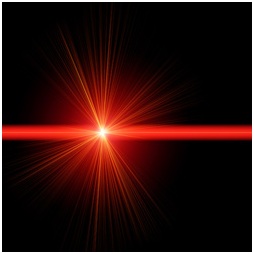
When it comes to protecting buildings and property, traditional methods of security—such as structural barriers, security guards, and security cameras—have their limitations. Advanced laser scanning technology can overcome many of these limitations and provide a safe, reliable, and easy-to-use solution.
Laser scanning technology for building security applications utilises the time-of-flight method, in which a sensor emits a pulse that is then reflected by a target, if present. The time required for the pulse to travel between the sensor and the reflector and back again is proportional to the distance. The longer the time required, the greater the distance. Essentially, a laser scanner works like radar but uses light instead of radio waves to scan the area. In security applications, the laser scanner measures these pulse reflections in order to quickly and accurately detect intrusions into a protected area.
Configured with other security tools and software, laser scanning technology can provide timely, automatic responses to a security threat. For example, a laser scanner can be integrated with auto-tracking cameras. If an intrusion is detected, the camera will automatically follow the intruder as they move through the protected area, keeping the intruder in sight and allowing for more accurate identification of the threat. Another frequent configuration is GPS mapping, which can be used to display and track the location of the threat on a building blueprint or property map using GPS coordinates.
While laser scanning technology can be used for multiple applications, it is especially suited for perimeter protection because it is highly accurate and can be configured for both indoor and outdoor environments.
Advanced laser scanning is not only safe and inconspicuous, but the technology also boasts many unique features that save both time and money. Some of the most significant features of laser scanning technology include: its ability to filter out environmental conditions, which saves time and expense by preventing false alarms due to rain or other conditions; a level of flexibility that makes it suitable for indoor and outdoor applications and also situations requiring portable application; and its usability in that it can be quickly and easily configured to any security need.
These key benefits, described in more detail below, make laser scanning technology a powerfully cost-effective and time-saving solution, set apart from other security solutions which are often not as reliable, versatile, or user-friendly.
Laser scanning technology is ideal as a security solution because it is invisible, allowing for inconspicuous monitoring of an area for intrusions. More importantly, laser scanners are also safe—with a Class 1 Eye Safety rating—so they will not harm people or animals in the monitored area. The safety and invisibility of laser scanners make them a sensible choice for high traffic areas such as indoor retail applications.In addition to multi-echo technology, laser scanners can be outfitted with filters to prevent the scanners from being dazzled by sunlight. Filters can also be applied to block out certain sections of a monitored area (for example, blocking out a road so that passing cars do not trip the alarm.)
Immunity to weather conditions and the ability to cancel out ambient activity is essential for outdoor security applications, for example, perimeter protection of a public building. Especially for these outdoor environments, it is also necessary to note the importance of a high environmental rating. For example, an IP67 rating will ensure the reliably of the laser scanner even after it is completely immersed in water.











